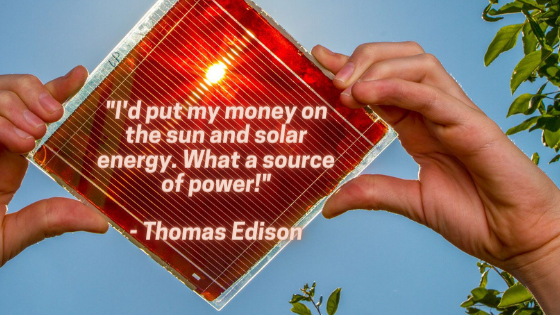In 1920, Thomas Edison said, “I’d put my money on the sun and solar energy. What a source of power! I hope we don’t have to wait until oil and coal run out before we tackle that. I wish I had more years left.”
Today, Perovskites are transforming solar energy in just the way Edison envisioned. Solar researchers are equating the dramatic solar cell efficiency improvements recently reported at Oxford University to the original invention of solar cells at Bell Laboratories in 1954. Back then, early cells had efficiencies of a few percent at best. While today’s cells are nominally 12-25% efficient depending on technology, the Oxford work pushes efficiencies to near 30% with realistic projections in the near term approaching 40%.
This is huge news as the cost effectiveness of solar panels is today reported to be nearing competitive levels with fossil fuels. With Oxford’s work, it could easily tip the balance in favor of photovoltaic systems, even in regions where sunlight is not typically strong nor sustained.

The magic for the Oxford cells lies in the way they sandwich two technologies together in what is known as a tandem cell. The lower part of the cell is a typical silicon solar cell. Applied over this base cell is a very thin transparent cell composed of perovskite technology. Think of this sandwich as an optical sieve.
The perovskite cell parses the incoming light and slices off the high energy [short wavelength] part of the solar spectrum and makes electricity out of it. The bottom part takes the remaining part of the spectrum [long wavelength] and makes electricity out of it. Voila! More of the solar energy is utilized; and scientists can “tweak” the top and bottom layers for even more solar utilization. Plus, at some point, more layers could be added to the sandwich, further segmenting the solar spectrum even more for greater total conversion efficiencies.
Check out the video below for the full explanation!
Another perk to Perovskites cells? They can also be made into flexible solar cells that would allow designers to wrap them around architectural shapes…with some researchers trying to make the cells using 3D printers! There is much to be coming in the future.

Were Edison alive today, he would most probably be in his chemistry lab right now, maybe doing an “all-nighter” playing with perovskites!


